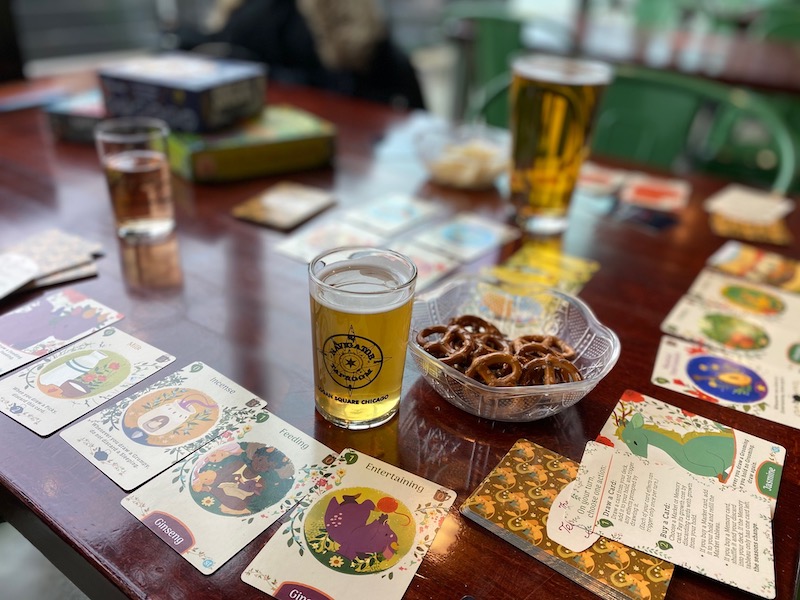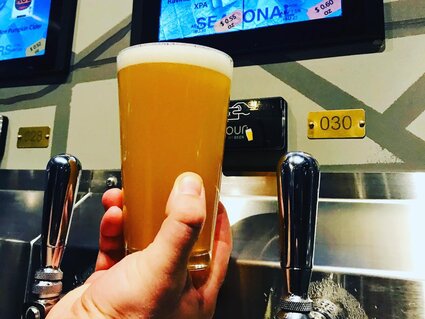What Different Types of Beer Are There?
While the art of craft brewing has quickly grown in popularity in recent years, beer still consists of a few key styles. Learning more about the different basic styles, ingredients, and some of the top distinct types can help you have a deeper appreciation for the art and nuances of beer as one of the most popular types of alcoholic beverages worldwide.
Knowing more about these details can hopefully also help you know different types of beer you may like and dislike, so you can more easily find existing favorites and have some guidance on finding new favorites when you visit your favorite local taproom. You can even use this deeper knowledge to impress friends, family, and colleagues, or use it as an icebreaker during social gatherings. In this article, we’ll discuss the answers to “What is beer made of?” and “What is ale?” as well as the details of other beer types.

What Is Beer Made Of?
There can be varying portions of different ingredients in your next glass of beer, depending on the particular style of beer being made. However, all beer is essentially composed of hops, grain, yeast, and water.
Hops
Providing different types of beer with their distinctive range of flavors, aromas, and intense-to-delicate bitterness, hops essentially work to balance out the sweetness of the existing malt. Hops are the flowers that bloom on the perennial vine of a hop plant. Hops contain a yellow powder called lupulin and resemble green, soft pine cones. The oils and resins contained in lupulin powder are vital for making beer. One hop resin, called alpha acid, provides beer with its bitterness. The oils provide certain beers, such as pale ales, with their citrusy, floral, hoppy aromas. As hops boil, the present alpha acid undergoes different chemical changes that allow it to make the beer bitter. The less time hops boil, the less bitterness is present in the beer. There are numerous hop varieties, each with its own unique flavor and aroma.
Grain
The various grains used in making beer (wheat, barley, corn, rice, rye, and more) are similar to those used to make various cereals, and can significantly impact the flavor. Wheat and barley must undergo a malting process before you can use them to make beer. Other grains don’t require this. The process of malting simulates grain germination, metabolizing the natural grain sugars (maltose) that yeast feeds on during the process of fermentation. The seed is soaked in water until the plant begins to grow. Before it emerges from the seed, it’s put in a kiln to dry. Drying makes different malt flavors and colors. Grains give beer aroma, malt flavor, fermentable material, and color.
Yeast
Another major ingredient in beer is yeast. During the process of fermentation, yeast takes in the sugars derived from the malted grain, excreting carbon dioxide and ethyl alcohol in return. The two major categories of yeast are lager and ale. Hundreds of yeast strains exist in these categories. Certain strains are better suited for specific beers. The majority of yeasts, including other ale yeasts, tend to have a more neutral character than yeast strains in Bavarian-style wheat beers. Lager yeasts are the most neutral strains, producing fewer fermentation by-products, allowing the hop and malt character of beer to dominate your palate.
Water
Beer essentially consists of up to 95% water, making the quality of present water highly impactful. Depending on its source, water can have distinct levels of mineral content, which can have a significant impact on the taste of your beer. Previously, it wasn’t possible to alter the mineral content of a region’s water, greatly impacting the beer styles successfully produced in a given area, and thus shaping the development of regional beers. Stouts, for example, developed in a time before water treatments, the origin region thus being suitable for only dark beer production. Pale ales in the English style owe their particular hop bite to the region’s water’s high sulfate content. Beers originating in southern Germany (Bavaria) owe their dark color and low hop bitterness to the water’s high carbonate content.

What Is Ale?
Ale exists as a type of beer defined by the yeast you use during the fermentation process. Ales involve a top-fermenting yeast, while lagers involve a bottom-fermenting yeast. They brew using yeast that tends to gather near the top of a fermentation tank during brewing. Ales tend to have a more flavorful taste marked by fruit flavors. The bottom-fermenting yeast of lagers produces a crisper flavor. In the category of ales are popular sub-styles, including some of the current most popular. Popular sub-styles include porters, pale ales, wheat beers, and stouts. Top fermenting yeasts to create ales also prefer warmer temperatures between 60 to 72 degrees Fahrenheit. Lager yeasts react best at lower temperatures, specifically 20 degrees Fahrenheit or colder. Most beers don’t require aging and ales yield better results when unaged or aged for a short time.
Other Beer Types
The two main beer types are ale and lager, with other types of beer coming from these root two. One of the biggest determining factors in making different types of beer is the process of fermentation. However, some beers defy specific classifications, classified instead as hybrids that contain attributes of both ales and lagers. Examples of lager beers are pale American lagers, Oktoberfests, bocks, and darker pilsners. Examples of ale beers are stouts, wheat beers, and IPAs (India Pale Ales). Spontaneous fermentation beers, involving fermenting and leaving the vessel alone to gather wild bacteria and yeast, include Belgian gueuze, American sour, and Flanders red ale. In addition to the various aforementioned, other high-level types of beer include amber, American pale ale, blonde ale, dunkel, German helles, hefeweizen, Kolsch, and tripel.

Come Experience the Different Types at Navigator
Once you know the answers to “What is beer made of?”, “What is ale?”, and what distinguishes other types of beer, it’s time to try them! At Navigator Taproom in Logan Square, you can test your knowledge and try new flavors today.
